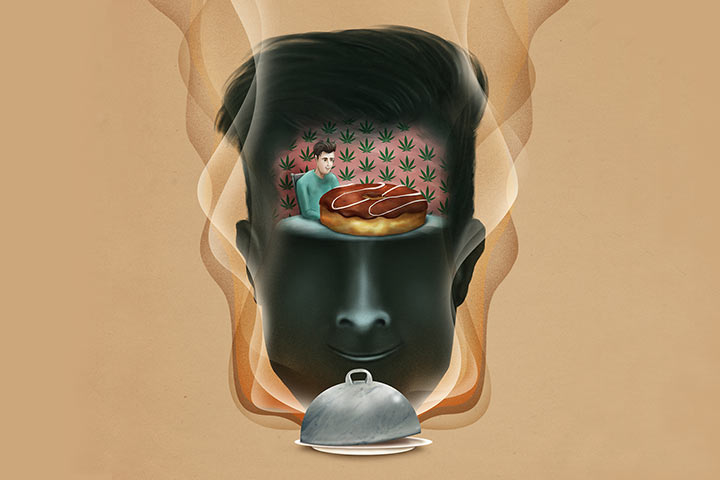
Giovanni Marsicano, Guillaume Ferreira et al. dans Current Biology

CB1 receptors in the anterior piriform cortex control odor preference memory
Geoffrey Terral1,2, Arnau Busquets-Garcia1,2, Marjorie Varilh1,2, Svein Achicallende3,4, Astrid Cannich1,2, Luigi Bellocchio1,2, Itziar Bonilla-Del Río3,4, Federico Massa1,2, Nagore Puente3,4, Edgar Soria-Gomez1,2,3,4,5, Pedro Grandes3,4, Guillaume Ferreira2,6,* & Giovanni Marsicano1,2,*
1 INSERM, U1215 NeuroCentre Magendie, 146 rue Léo Saignat, 33077 Bordeaux cedex, France.
2 University of Bordeaux, 146 rue Léo Saignat, 33000 Bordeaux, France.
3 Department of Neurosciences, University of the Basque Country UPV/EHU, Barrio sarriena s\n, 48940 Leioa, Spain
4 Achucarro Basque Center for Neuroscience, Science Park of the UPV/EHU, 48940 Leioa, Spain.
5 IKERBASQUE, Basque Foundation for Science, Maria Diaz de Haro 3, 48013 Bilbao, Spain.
6 INRA, Nutrition and Integrative Neurobiology, UMR 1286, 146 rue Léo Saignat, 33076 Bordeaux cedex, France.
Corresponding author:
– Giovanni Marsicano, (Lead Contact)
– Guillaume Ferreira,
*These authors share senior authorship.
Abstract
The retrieval of odor-related memories shapes animal behavior. The anterior piriform cortex (aPC) is the largest part of the olfactory cortex and it plays important roles in olfactory processing and memory. However, it is still unclear whether specific cellular mechanisms in the aPC control olfactory memory depending on the appetitive or aversive nature of the stimuli involved. Cannabinoid-type 1 (CB1) receptors are present in the aPC (aPC-CB1), but their potential impact on olfactory memory was never explored. Here, we used a combination of behavioral, genetic, anatomical and electrophysiological approaches to characterize the functions of aPC-CB1 receptors in the regulation of appetitive and aversive olfactory memory. Pharmacological blockade or genetic deletion of aPC-CB1 receptors specifically impaired the retrieval of conditioned odor preference (COP). Interestingly, expression of conditioned odor aversion (COA) was unaffected by local CB1 receptor blockade, indicating that the role of aPC endocannabinoid signaling is selective for retrieval of appetitive memory. Anatomical investigations revealed that CB1 receptors are highly expressed on aPC GABAergic interneurons, and ex vivo electrophysiological recordings showed that their pharmacological activation reduces miniature inhibitory currents (mIPSCs) onto aPC semilunar (SL), but not pyramidal principal neurons. COP retrieval, but not COA, was associated with a specific CB1 receptor-dependent decrease of mIPSCs in SL cells. Altogether, these data indicate that aPC-CB1 receptor-dependent mechanisms physiologically control the retrieval of olfactory memory depending on odor valence and engaging modulation of local inhibitory transmission.
https://www.cell.com/current-biology/fulltext/S0960-9822(19)30768-7
Illustration : Charlie Padgett (charliepadgett.com)
Mise à jour: 01/04/20
